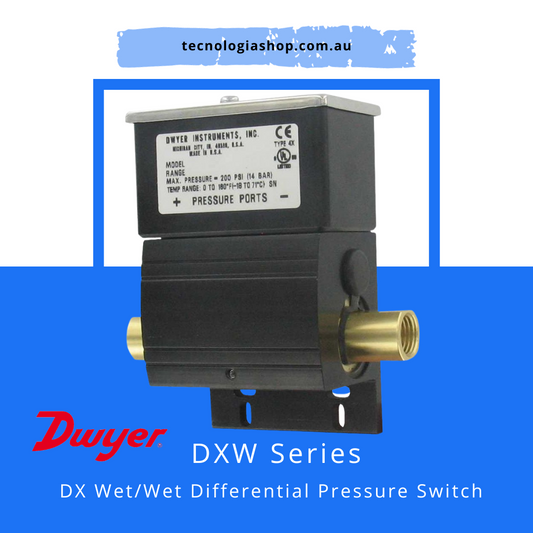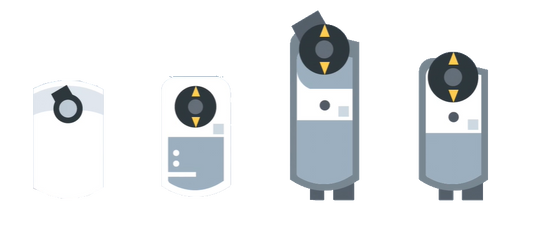Understand the Importance of CO2 Sensors
What are CO2 Sensors?
CO2 sensors, also known as carbon dioxide sensors, are devices that measure the levels of carbon dioxide in the air. They are commonly used in various industries and applications to ensure safety, monitor air quality, and optimize energy efficiency.
Why are CO2 Sensors Important?
CO2 sensors play a crucial role in maintaining a healthy and safe environment. Here are some reasons why they are important:
1. Indoor Air Quality
CO2 sensors are essential for monitoring indoor air quality. High levels of carbon dioxide can indicate poor ventilation, which can lead to discomfort, drowsiness, and even health issues. By detecting and alerting to elevated CO2 levels, these sensors help ensure a healthy and comfortable indoor environment.
2. Safety
In certain industries, such as manufacturing, laboratories, and breweries, the presence of high levels of carbon dioxide can be hazardous. CO2 sensors are used to detect leaks or excessive concentrations of CO2, allowing for prompt action to prevent accidents, injuries, or even fatalities.
3. Energy Efficiency
CO2 sensors are also employed in energy management systems to optimize energy efficiency. By monitoring CO2 levels, these sensors can determine the occupancy of a space and adjust ventilation accordingly. This helps reduce energy waste by ensuring that ventilation systems are only operating when necessary.
4. Environmental Impact
Monitoring and controlling CO2 levels is crucial for reducing the environmental impact of various industries. By using CO2 sensors, businesses can actively manage their carbon footprint and contribute to sustainability efforts. These sensors enable the implementation of effective strategies to minimize CO2 emissions and promote a greener future.
What CO2 sensor should I choose?
Choosing a CO2 sensor depends on your specific requirements and the application you have in mind. There are various types of CO2 sensors available, each with its own features, accuracy levels, and suitability for different applications. Here are some factors to consider when selecting a CO2 sensor:
-
Application:
- Indoor Air Quality (IAQ) Monitoring: For monitoring CO2 levels in indoor environments, you may want a sensor with good accuracy and reliability.
- Industrial or HVAC Systems: In industrial settings or HVAC (Heating, Ventilation, and Air Conditioning) systems, you might need sensors that can withstand harsh conditions and provide real-time data for control systems.
- Greenhouses: Greenhouse applications require sensors that can operate in high humidity environments and provide precise control over CO2 levels for plant growth.
-
Measurement Range: Ensure that the sensor's measurement range is suitable for your application. Some sensors are designed for low-range measurements (e.g., 0-2,000 ppm), while others are for high-range measurements (e.g., 0-50,000 ppm).
-
Accuracy and Precision: Consider the required level of accuracy and precision for your application. High-precision sensors are necessary for critical applications like medical or laboratory settings.
-
Sensor Type:
- Non-Dispersive Infrared (NDIR): NDIR sensors are commonly used for CO2 detection due to their high accuracy and stability. They are suitable for most indoor applications.
- Chemical Sensors: Chemical sensors, such as metal oxide sensors (MOX) or electrochemical sensors, are often used in portable or low-cost CO2 detectors. They may have lower accuracy compared to NDIR sensors.
-
Response Time: Different sensors have varying response times. Faster response times are important for applications where rapid changes in CO2 levels need to be detected.
-
Environmental Conditions: Consider the environmental conditions in which the sensor will be used. Some sensors are better suited for outdoor use or high-humidity environments, while others are designed for indoor applications.
-
Calibration and Maintenance: Determine how easy it is to calibrate and maintain the sensor. Some sensors require regular calibration to maintain accuracy.
-
Output Type: Check the type of output the sensor provides. Some sensors offer analog outputs (e.g., voltage or current), while others provide digital outputs (e.g., UART, I2C) for easy integration into microcontroller-based systems.
-
Cost: Your budget is a significant factor. High-precision and feature-rich sensors tend to be more expensive than basic models.
-
Power Consumption: Consider the power requirements of the sensor, especially if you plan to use it in a battery-powered device or for long-term monitoring.
Popular CO2 sensor brands include Dwyer, Siemens, Produal among others. Be sure to read product specifications and user reviews to determine which sensor best suits your needs. If you have a specific application or usage scenario in mind, it may be helpful to consult with a sensor specialist or supplier for tailored recommendations.



